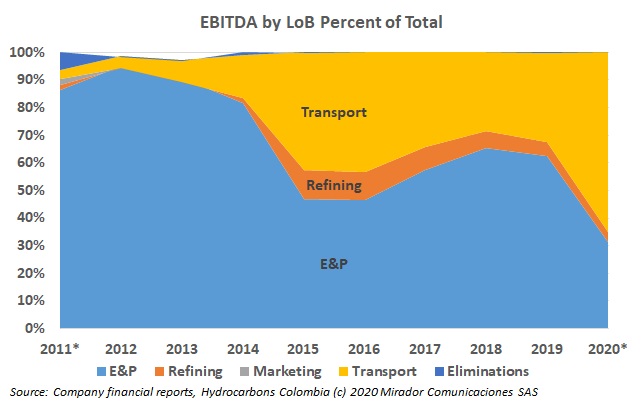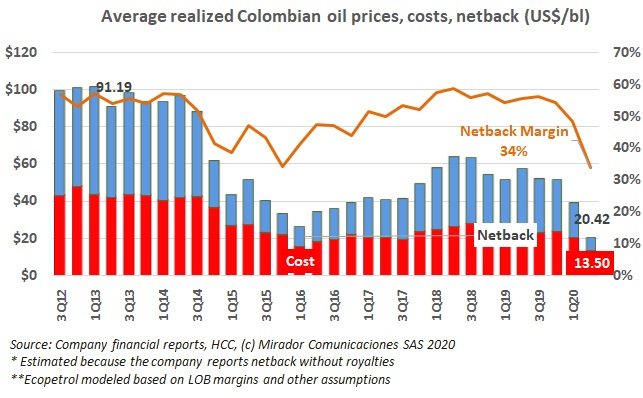
It has been nearly three months since our last article tracking key pandemic statistics so we thought these graphs might be useful. Things have been getting better but questions remain.
Two weeks ago I wrote, “The past six months have provided ample evidence of the dangers of applying ‘political intuition’ to issues that require scientific evidence and scientific reasoning.” This week provided ample evidence that this point has not, in fact, been understood.

While doing the rounds of editorial boards in honor of Ecopetrol’s 69th birthday, CEO Felipe Bayón’s message was that the Colombian government should not sell any part of the NOC, especially Cenit. The company’s 2Q20 results show why: without the Transport sector, his company would be a far worse financial situation.
As the country creeps closer and closer to fracking trials, the opposition gets shriller concerned that economic interests will overcome environmental considerations. Concerned that the courts might make a pro-fracking decision, members of Congress from several parties across the center and left have filed a bill to prohibit the practice. That inspired the associations representing the oil and gas industry’s professionals to make a plea for science to carry its proper weight in these deliberations.

Our readers do not have to be told 2020 (so far) has been a bad year for oil prices. They probably realize that this cannot be a good thing for profitability. What may not be so intuitive is that prices have fallen so far that Colombian gas has (again) become more profitable than Colombian oil.
One of my favorite – and most useful – things to do is catch up with people in the industry over coffee, or, at the end of the day, over something stronger – like vintage soda water. This habit, like many, has been transformed by the current crisis.

We can get down on the Colombian government for not supporting the oil and gas industry as we think it should be. But BP’s latest Energy statistics show that Latin America’s production problems are not caused by Colombia.
At least that is my – perhaps naïve – hope. The ACIPET’s plea to not sell even 8% of Ecopetrol and recent events at Pemex and PDVSA have me thinking again about politicians’ love of state-owned-enterprises (SOEs) at least in some countries like Colombia.

Recently BP published its annual statistical report on energy and so we updated some of the charts we publish from time to time. As always it seems, the evolving energy matrix evolves more slowly than the related press.
Recently, the Petroleum Engineers’ Association (ACIPET) has written a steady stream of short opinion articles and we have been publishing them from time to time in English. I am generally in agreement with their viewpoint but the latest has me scratching my head.